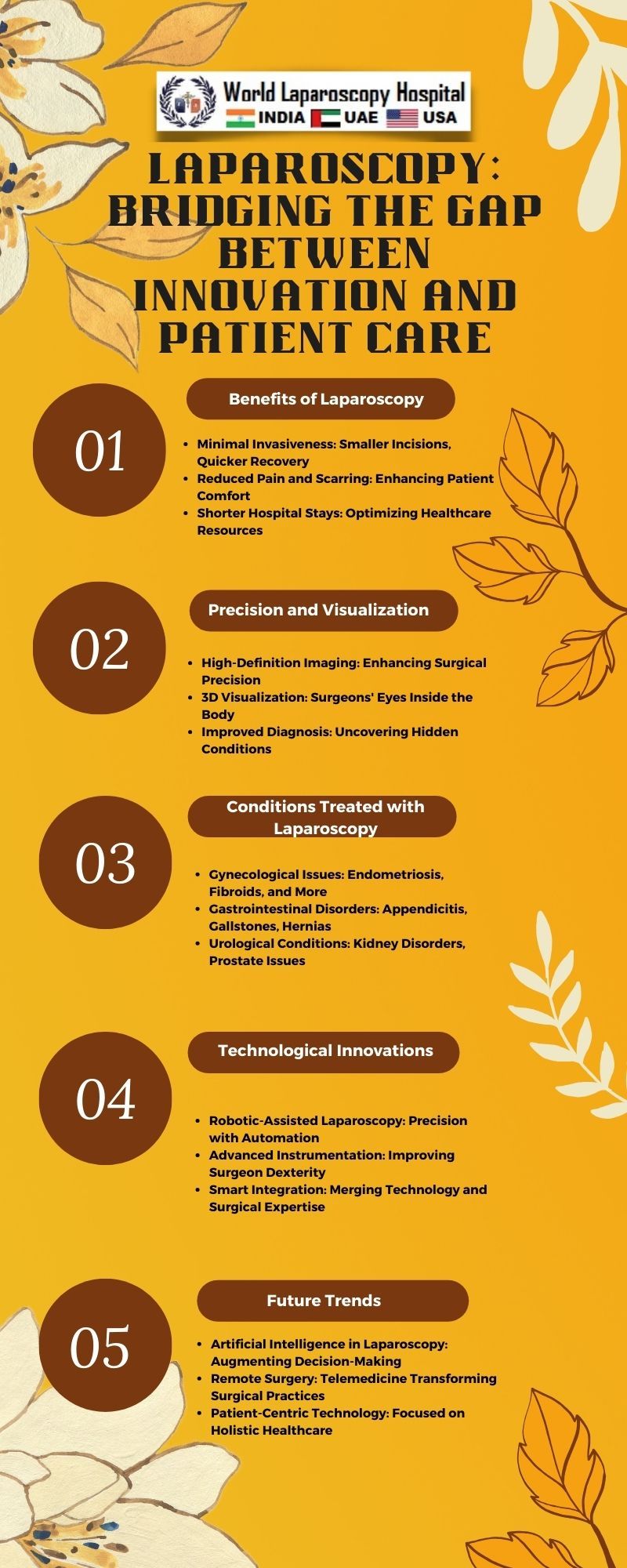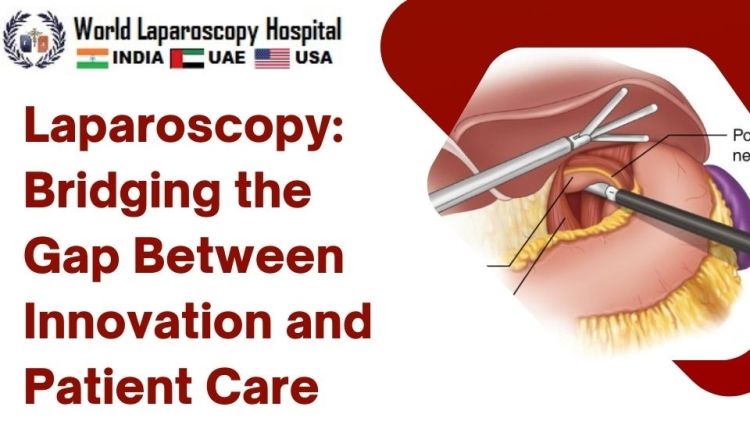Laparoscopy: Bridging the Gap Between Innovation and Patient Care
Introduction:
In the ever-evolving landscape of medical technology, laparoscopy stands as a testament to the seamless integration of innovation and patient-centered care. This minimally invasive surgical technique has revolutionized the field, offering a bridge between groundbreaking advancements and the fundamental goal of providing optimal patient outcomes with enhanced comfort and recovery. As we delve into the depths of laparoscopy, we uncover the transformative impact it has had on surgical practices and its profound implications for the future of healthcare.

Evolution of Laparoscopy: From Concept to Cutting-Edge
Historical Perspective:
- The early exploration of endoscopy and its limitations.
- Milestones in laparoscopic development, from its inception to present-day applications.
Technological Advancements:
- Introduction of fiber optics and video technology.
- Robotics in laparoscopic surgery and its implications for precision.
The Mechanism Behind Laparoscopy: Precision and Minimally Invasive Excellence
Instrumentation:
- Insight into laparoscopic instruments and their roles.
- The importance of trocars and cannulas in creating access points.
Visualization Techniques:
- High-definition imaging in laparoscopy.
- Three-dimensional visualization and its impact on surgical precision.
Clinical Applications: Laparoscopy Across Specialties
Gynecology:
- Laparoscopy in gynecological procedures - advantages and applications.
- Endometriosis management through minimally invasive techniques.
Gastroenterology:
- Laparoscopy in gastrointestinal surgeries - a paradigm shift.
- Treating obesity through laparoscopic bariatric procedures.
Urology:
- Laparoscopic approaches in urological surgeries.
- Nephrectomy and prostatectomy: Advancements in minimally invasive urologic techniques.
General Surgery:
- Appendectomy and cholecystectomy through laparoscopy.
- The role of laparoscopic surgery in hernia repair.
Benefits Beyond the Scalpel: Patient-Centric Advantages of Laparoscopy
Reduced Recovery Time:
- Comparative analysis of laparoscopic vs. traditional open surgeries.
- Enhanced postoperative comfort and reduced hospital stays.
Cosmetic Considerations:
- Minimizing scarring through small incisions.
- Psychological impact and patient satisfaction.
Lowered Risk of Infection:
- Aseptic techniques in laparoscopy.
- Comparative infection rates between laparoscopic and open procedures.
Challenges and Future Prospects: Navigating the Path Forward
Learning Curve:
- Surgeon training and adaptation to laparoscopic techniques.
- Strategies to overcome the initial challenges faced by surgeons.
Cost Considerations:
- Initial investments vs. long-term benefits.
- Addressing economic barriers for widespread adoption.
Future Technological Integrations:
- Artificial intelligence in laparoscopy - potential and challenges.
- Integration of virtual reality for surgical planning and training.
Ethical Considerations: Balancing Innovation and Patient Welfare
Informed Consent:
- Ensuring patients are well-informed about laparoscopic procedures.
- Addressing potential ethical concerns related to new technologies.
Access to Advanced Care:
- Disparities in access to laparoscopic surgery.
- Strategies for ensuring equitable distribution of advanced surgical care.
Conclusion:
Laparoscopy, with its rich history, technological marvels, and patient-centric advantages, emerges as a beacon of innovation in the medical field. As it continues to bridge the gap between cutting-edge technology and compassionate patient care, the journey of laparoscopy is a testament to the unwavering pursuit of excellence in the medical profession. Embracing the challenges and opportunities that lie ahead, laparoscopy paves the way for a future where surgical interventions are not only effective but also deeply considerate of the well-being of every patient.






